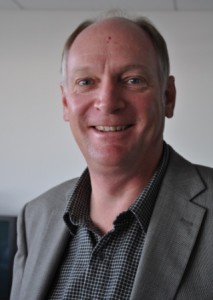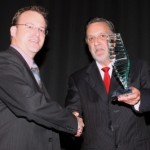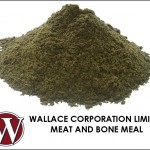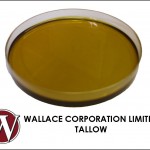The first New Zealand meat industry appointments to the international Fats and Protein Research Association (FPRF) were made recently.
 Graham Shortland, chief executive of Waitoa-based Wallace Corporation, is now a director of the Foundation, while meat scientist Mike North, formerly with AgResearch and now project manager for Taranaki Bio Extracts, has been appointed to the FPRF research committee.
Graham Shortland, chief executive of Waitoa-based Wallace Corporation, is now a director of the Foundation, while meat scientist Mike North, formerly with AgResearch and now project manager for Taranaki Bio Extracts, has been appointed to the FPRF research committee.
Shortland believes that this is a “super opportunity” for the New Zealand and Australian rendering industry to be directly involved in and influence a very credible organisation. “I’m looking forward to taking up the role,” he says.
The US-based FPRF sponsors research on rendered products to enhance current usage and also to develop new uses.
Rendering is an important contributor to revenues for the New Zealand meat industry, producing value-added products, tallow and bone meal (see Food NZ February/March 2010) and also mitigating greenhouse gas emissions. Exports of both products to the year end June 2012 were worth $308 million. Tallow exports grew in value by $16 million to $169 million, with volume rising 15,710 tonnes to 134,177 tonnes, with China taking over two-thirds of the exported product. While the value of meat and bone meal exports – primarily to Indonesia and the US – grew by $10 million to $139 million, the volume fell slightly, by just over 3,000 tonnes, on the previous year to 145,563 tonnes.
Both Wallace Corporation and Taranaki Bio Extracts are members of the Meat Industry Association (MIA)’s Renderers’ Group, which recently received New Zealand Trade & Enterprise funding for a market development project aiming to increase returns by selling rendered products into higher value applications and markets. Insights Shortland and North gain from their involvement with FPRF will be fed back into that project, which is now at stage one: targeted market research.
“We are now starting to see a clearer picture of where we might obtain higher returns for some of our basic commodities,” says Shortland. “The FPRF has carried out research and innovation projects that could well help us move our value-add objectives ahead more speedily.”
Offering his congratulations on their appointment, Renderers’ Group executive member Alan von Tunzelman, general manager of PVL Proteins Ltd and a past president of the World Renderers’ Organisation, said he never thought a nominee from this country would be appointed to a role in the international organisation.
“To get both appointed to the respective roles is a great tribute to how they feel about us as an organisation and as people who can contribute positively and make sensible inputs into the FPRF. This is a wonderful opportunity to advance international research and development into rendering and the great work performed by the Meat Industry Research Institute of New Zealand has a further chance of some new life.”
The Renderers Group runs training workshops, which enable experienced operators and supervisors to receive the core knowledge necessary for the National Certificate in Meat Processing (Rendering Level 4) and to build networks with others in the industry. In addition, a joint meeting for members with Australian counterparts in March gave further opportunity for international sharing of knowledge.
In consultation with members, the group published the ‘New Zealand Rendering Industry Guidelines for Managing and Assessing Odour’ last year. Copies are available from the MIA.
Find out more about FPRF at its website www.fprf.org.
This article first appeared in Food NZ (December 2012/January 2013).




